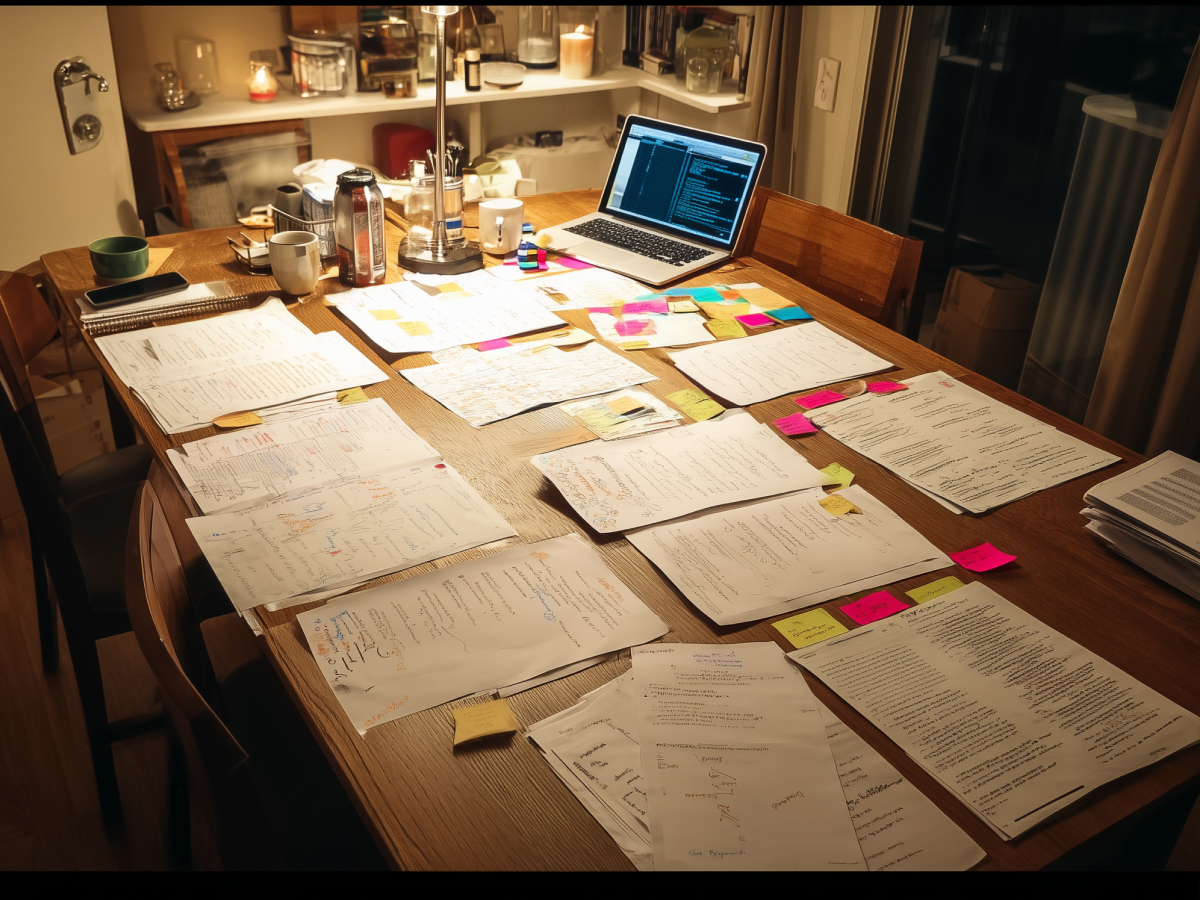How remote work is shaping modern team building
Remote work has seen rapid growth, driven by advances in technology and changing employee expectations, offering key benefits for both organizations and their employees.
Studies show that remote workers are often more productive, with 77% reporting higher productivity levels due to fewer distractions and less time spent commuting.
Productivity boosts directly contribute to better business outcomes, as remote work reduces overhead costs by eliminating the need for physical office space, utilities, and other expenses tied to maintaining a traditional office environment.
According to Buffer’s State of Remote Work report, 93% of professionals say remote work positively impacts their mental health, attributing this to better work-life balance, less stress, and the flexibility to manage personal commitments.
The shift to remote work isn’t a temporary trend, but rather a fundamental change in how companies operate. By 2025, 22% of the American workforce — around 36.3 million people — will work remotely, reflecting an 87% increase from pre-2020 levels.
The subtle challenges of remote work
While remote work offers many advantages, it also introduces unique challenges, particularly in developing team cohesion and collaboration. Employees may struggle to connect on a personal level due to the lack of face-to-face interaction, which can impact morale and productivity.
Physical distance between employees can create barriers to developing trust and open communication, making it harder to build a unified team culture. Without intentional efforts to engage remote employees, companies risk decreased engagement and higher turnover rates.
What remote team building really means
Remote team building encompasses a range of activities, strategies, and exercises designed to foster interpersonal relationships in a digital workspace.
Unlike traditional team building, which often relies on physical proximity and spontaneous interactions, remote team building requires a more deliberate approach.
It uses digital tools and structured activities to create an environment where employees feel connected, valued, and aligned with team goals. The focus here should be on promoting engagement, trust, and collaboration, making sure employees feel part of a cohesive unit despite geographical distances.
Effective remote team building involves regular, well-planned activities that cater to the diverse needs and preferences of team members. These activities typically include virtual games, workshops, or collaborative projects designed to strengthen bonds and maintain a sense of community.
Why remote team building matters more than ever
Managing isolation and disconnection
Remote team building is key in addressing the isolation, depression, and disconnection that remote employees often experience.
Research indicates that up to 40% of remote workers report feelings of anxiety and depression.
A lack of daily in-person interactions can lead to a sense of isolation, which negatively impacts employee morale and performance. Through implementing these virtual team-building activities, organizations can build up a sense of belonging and connection, counteracting these negative feelings.
Stronger team connections result in more productive and effective teams. Employees who feel connected to their colleagues are more likely to engage in open communication, share ideas freely, and collaborate effectively—reducing friction and improving overall team performance.
How strong team bonds drive performance
Positive relationships within remote teams contribute to a culture of trust and openness, which is key for effective collaboration. When team members trust one another, they communicate more freely and honestly, leading to better decision-making and problem-solving.
Strong team bonds also encourage creativity, as employees feel comfortable sharing innovative ideas without fear of judgment.
Studies show that teams with strong interpersonal connections perform better across different metrics, including productivity, efficiency, and overall work quality. Reams that collaborate effectively are also better equipped to handle conflicts constructively, minimizing disruptions and maintaining focus on shared goals.
The real struggles of remote teams
Mental health concerns in remote work
Up to 40% of remote workers experience anxiety and depression, often exacerbated by feelings of isolation and disconnection. Without the social support structures that exist in physical workplaces, remote employees may struggle to cope with stress and maintain their mental well-being.
Organizations must proactively address these issues by providing access to mental health resources and incorporating regular team-building activities to cultivate a sense of community and support.
Communication barriers
Text-based communication tools like emails and instant messaging are often misinterpreted, leading to misunderstandings and miscommunications among remote teams. Emojis and GIFs offer limited emotional context, which can result in confusion or unintended offense.
To counter this, teams should adopt a multi-channel communication strategy that includes video calls, voice messages, and collaboration platforms to improve clarity and build up a more inclusive communication environment.
Time zone differences
Time zone differences can present logistical challenges for remote teams, particularly when coordinating meetings or collaborating on projects in real-time.
This then typically leads to delayed responses and fragmented workflows, which can cause frustration and disrupt productivity. Effective management of time zones requires strategic scheduling, clear communication, and flexibility to accommodate team members’ varied working hours.
Why strong remote team connections matter
How great team bonds boost communication
Stronger bonds within remote teams lead to improved communication and collaboration. When team members trust each other, they are more likely to engage in open discussions, share information readily, and collaborate effectively. The result is boosted productivity and efficiency, resulting in higher-quality work outputs and a more unified team.
Increased job satisfaction and retention
Close-knit remote teams often experience higher job satisfaction, which positively impacts employee retention. Employees who feel valued and connected to their colleagues are more likely to remain with their current employer.
A study by Gallup found that teams with high levels of engagement see 59% less turnover compared to less engaged teams. Investing in team-building efforts helps companies reduce turnover rates and retain top talent.
How team connection sparks innovation
Strong team relationships encourage diverse perspectives, which improve problem-solving and creativity. When employees feel comfortable expressing their opinions and ideas, teams benefit from a broader range of viewpoints and solutions. Diversity encourages innovation and helps teams tackle complex challenges more effectively.
Fun and effective remote team building ideas
Transform remote team dynamics with activities that break down barriers, spark creativity, and strengthen bonds. Here’s a mix of fun and innovative ideas that will make team-building both enjoyable and impactful, keeping everyone connected and engaged, no matter the distance.
- Virtual icebreakers: Virtual icebreakers, such as virtual coffee breaks, “Two Truths and a Lie,” or remote show-and-tell, create a relaxed atmosphere that encourages employees to interact informally. These activities help break down barriers and build rapport among team members, making future communication more comfortable and effective.
- Boosting team spirit with online games: Online games like virtual escape rooms, murder mysteries, and multiplayer video games promote teamwork and communication. These activities require participants to strategize, solve problems, and work together to achieve a common goal, mirroring real-world team dynamics.
- Learning together with skill workshops: Workshops that focus on specific skills, such as virtual cooking classes, language lessons, or coding challenges, provide opportunities for team bonding while promoting personal and professional development. These sessions instill a culture of continuous learning and encourage employees to connect over shared interests.
- Staying healthy with remote team fitness: Fitness and wellness activities, such as virtual yoga sessions, step challenges, and guided meditation, promote health and reduce stress. They also help create a sense of community and support, contributing to a positive team culture.
- Creative team projects: Creative projects, including virtual talent shows, collaborative story-writing, digital art, and music projects, allow team members to express their creativity and collaborate in a fun, engaging way—building camaraderie and improving team cohesion.
- Friendly competitions for team building: Friendly competitions, like cooking or baking challenges, trivia nights, or online quizzes, build up camaraderie and healthy competition among employees. These events are fun and interactive, providing a break from routine tasks while strengthening team bonds.
Best practices for organizing virtual team building activities
Crafting the perfect virtual team-building strategy requires thoughtfulness and flexibility. Follow these best practices to choose activities that fit your team’s unique dynamics, schedule them effectively, and make sure they’re inclusive and engaging for everyone.
- Choose the right activities: Selecting activities that match the interests, preferences, and schedules of team members is essential for successful team-building efforts. Leaders should consider team size, work schedules, and current challenges when planning activities to maximize engagement and participation.
- Scheduling and frequency: Scheduling activities at times that are convenient for all team members is key, especially when teams are spread across multiple time zones. Balancing the frequency of activities with workload demands helps maintain engagement without causing burnout.
- Incorporate inclusivity: Creating inclusive team-building events that are accessible and enjoyable for everyone is key—typically involving considering different physical abilities, cultural backgrounds, and time constraints to make sure all team members feel valued and included.
- Gathering feedback and adjusting: Regular feedback collection through surveys or direct conversations helps refine and improve future activities. Feedback makes sure activities remain relevant, engaging, and effective in improving team cohesion.
Tools and platforms for remote team building
Tap into the power of technology to bring your remote team together. These tools and platforms make virtual team-building more interactive and engaging, from video conferencing to online games and wellness apps.
- Video conferencing tools: Platforms like Google Meet, Zoom, and Microsoft Teams are fundamental for remote team-building, providing features like breakout rooms, screen sharing, and virtual backgrounds to facilitate engagement and interaction.
- Collaboration platforms: Slack, Trello, and Asana support real-time communication, project management, and event planning, helping teams stay organized and connected.
- Online game platforms: Platforms like Kahoot, JackBox Games, and Tabletopia offer a range of game options that make virtual team-building fun and engaging, promoting teamwork and collaboration.
- Wellness and fitness apps: Apps like Headspace, Calm, and Strava integrate wellness into team-building efforts, helping employees maintain physical health and mental well-being.
Measuring remote team building efforts
Support your team’s well-being with apps that integrate health into your team-building activities. Whether it’s guided meditation or step challenges, apps like Headspace, Calm, and Strava help keep your team healthy and happy.
- Key performance indicators: Tracking KPIs such as team productivity, engagement, participation rates, employee satisfaction, and retention provides insights into the effectiveness of team-building efforts.
- Surveying team members: Surveys gather feedback on team morale, dynamics, and satisfaction with activities, helping leaders make data-driven decisions for future planning.
- Continuous improvement: Establishing a feedback loop makes sure team-building strategies are continuously refined based on employee input and measurable outcomes.
Final thoughts
As remote work continues to disrupt the traditional workplace, leaders must ask themselves: Are you investing enough in building a strong, connected team that thrives beyond physical boundaries? What new strategies could you adopt today to create happier, more productive teams?




